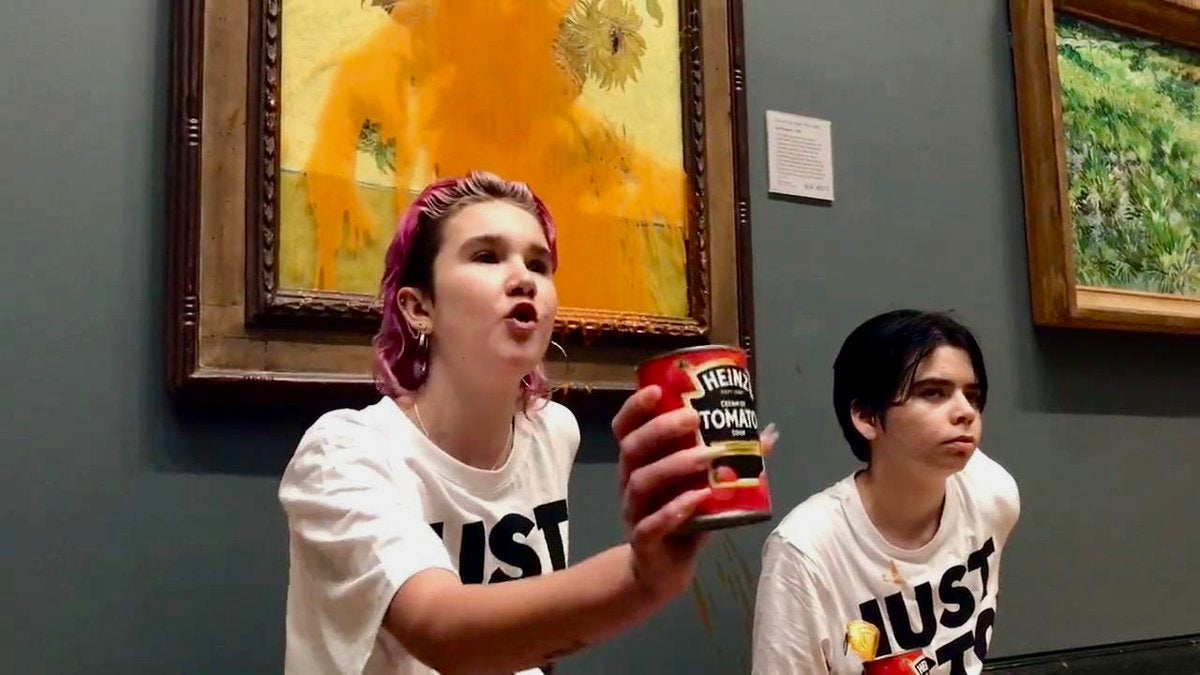Van Gogh’s Sunflowers: The story behind the artist’s 1888 masterpiece
Protestors threw soup at the artwork in London’s National Gallery this week
Your support helps us to tell the story
From reproductive rights to climate change to Big Tech, The Independent is on the ground when the story is developing. Whether it's investigating the financials of Elon Musk's pro-Trump PAC or producing our latest documentary, 'The A Word', which shines a light on the American women fighting for reproductive rights, we know how important it is to parse out the facts from the messaging.
At such a critical moment in US history, we need reporters on the ground. Your donation allows us to keep sending journalists to speak to both sides of the story.
The Independent is trusted by Americans across the entire political spectrum. And unlike many other quality news outlets, we choose not to lock Americans out of our reporting and analysis with paywalls. We believe quality journalism should be available to everyone, paid for by those who can afford it.
Your support makes all the difference.On Friday 14 October, Vincent Van Gogh’s 1888 masterpiece, Sunflowers, was targeted by Just Stop Oil protestors at the National Gallery in London.
The oil-on-canvas painting, which is protected by a glass cover, has an estimated value of £72.5m.
A National Gallery spokesperson told The Independent: “There is some minor damage to the frame but the painting is unharmed.”
It is one of the most popular paintings in the National Gallery, and is thought to be the picture that Van Gogh was most proud of.
It was painted during a period of optimism for the Dutch artist, while he awaited the arrival of his hero, the avant-garde painter Paul Gauguin.
Van Gogh had moved to Arles, in the south of France, with the hope of setting up a community of artists.
He made seven versions of the artwork, and he saw yellow as an emblem of happiness. In Dutch literature, the sunflower symbolises loyalty. The image of their decay also reflects the cycle of life and death.
The same year Van Gogh created Sunflowers, he cut off his ear and took it to the local brothel where he tried to give it to one of the sex workers.

In 1889, Van Gogh voluntarily entered the mental asylum at Saint-Rémy. He painted there, too, to keep his paranoid hallucinations at bay.
In 1890, at the age of 37 and having sold only one painting in his life, Van Gogh took his own life.




Join our commenting forum
Join thought-provoking conversations, follow other Independent readers and see their replies
Comments